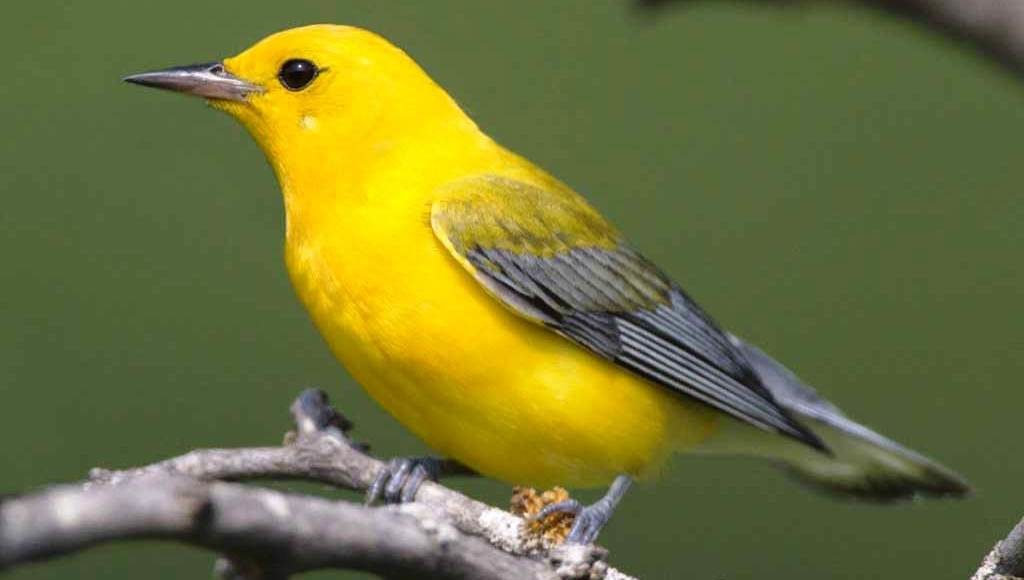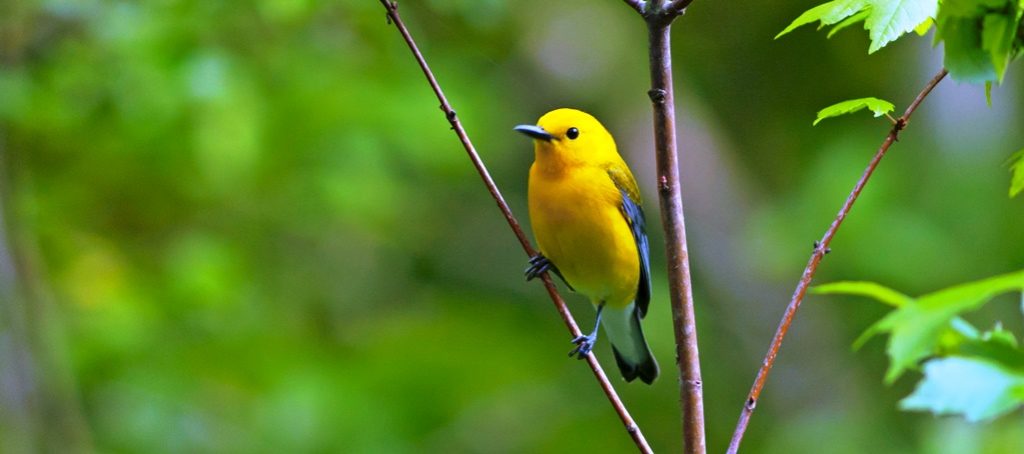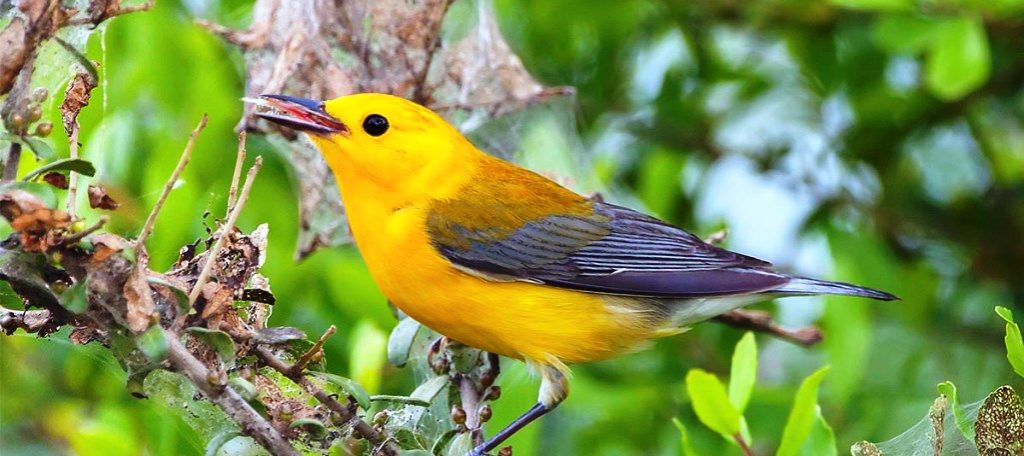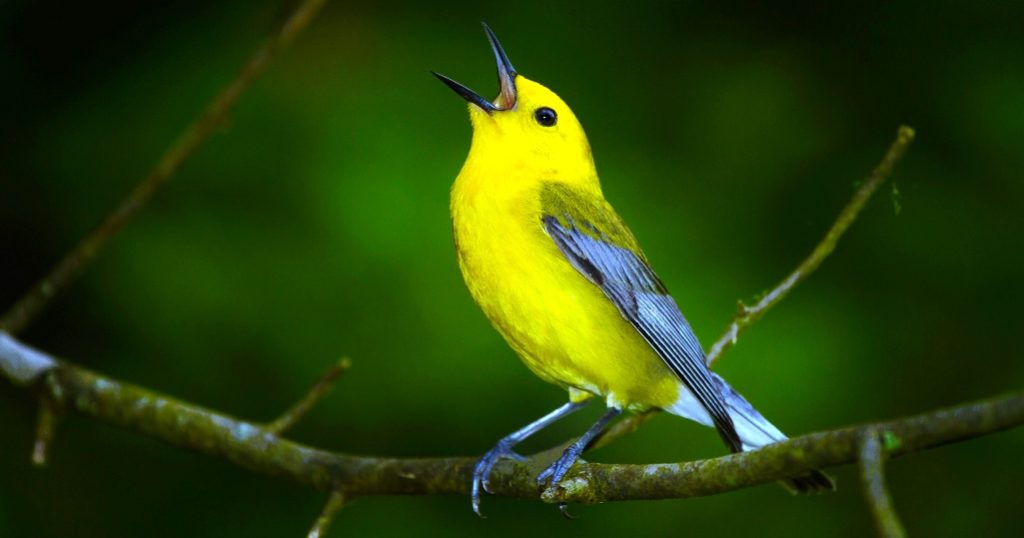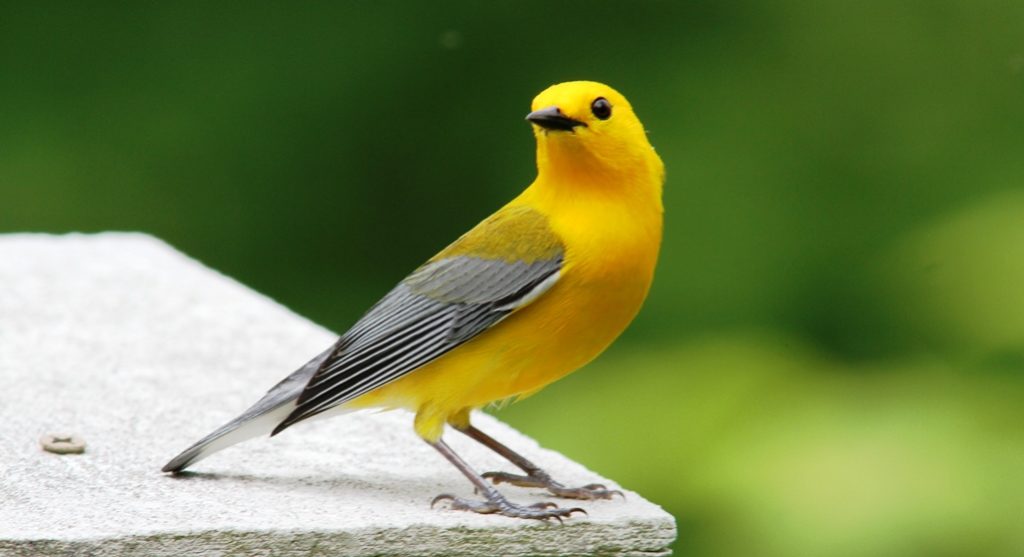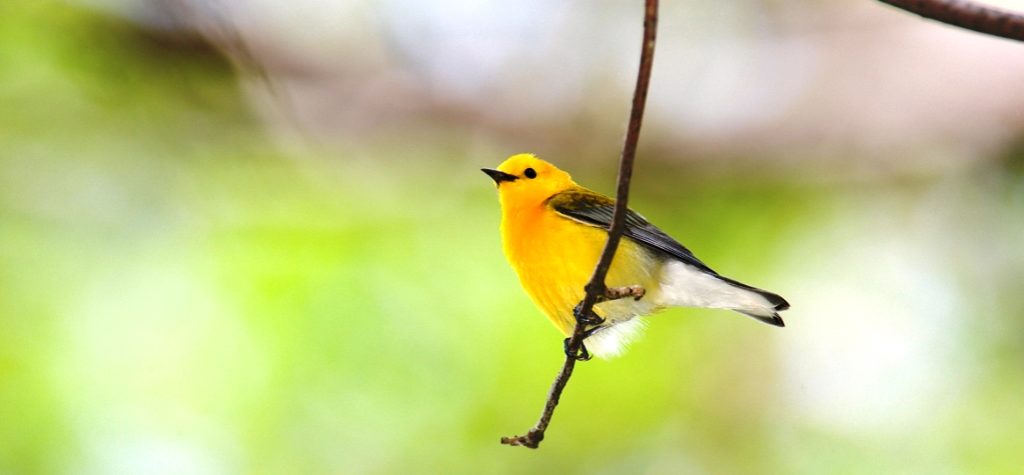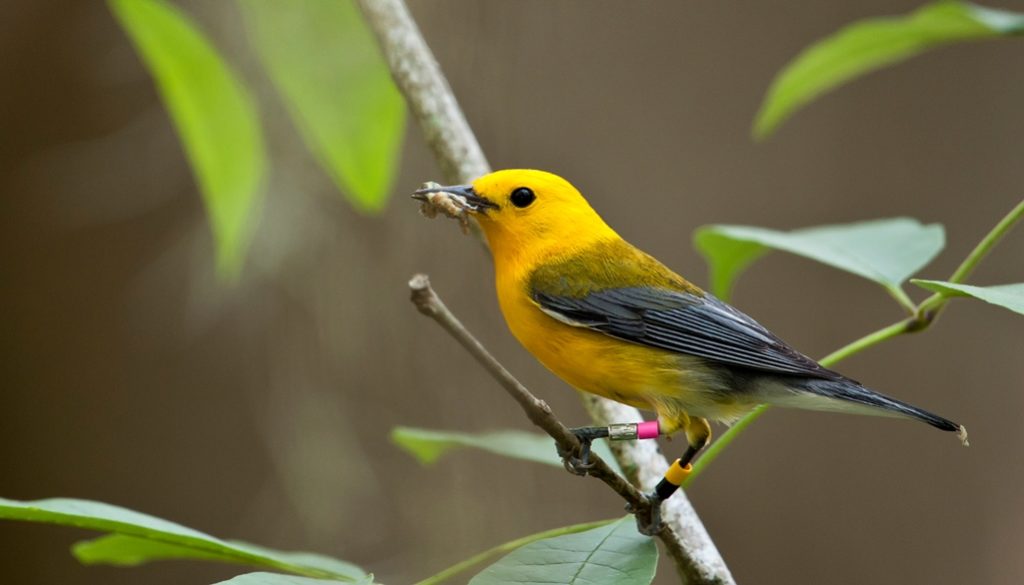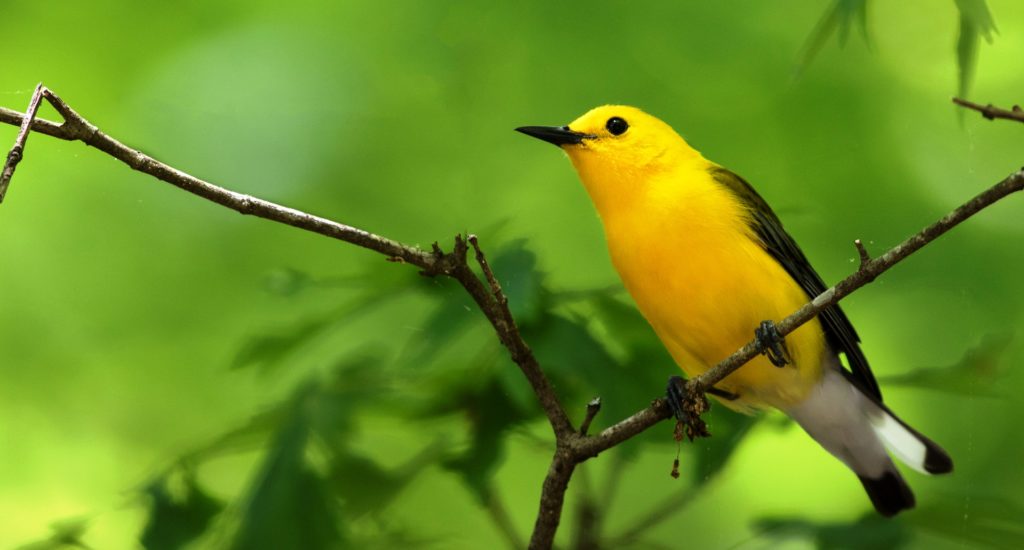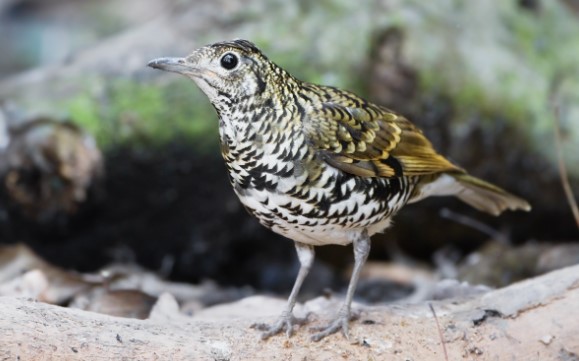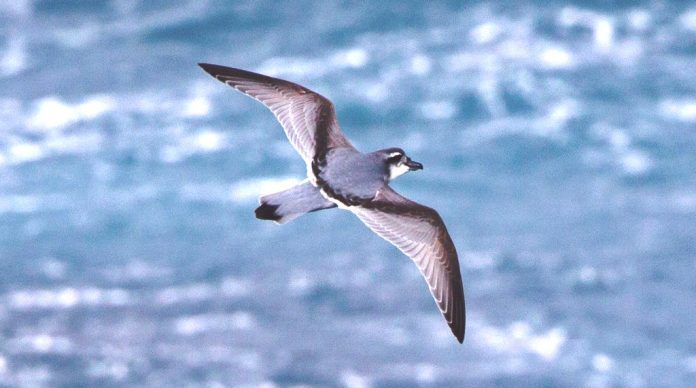The protonotary warbler is one of the most striking wood warblers in North America. It intrigues and delights those who visit its swampy world. The Prothonotary Warbler, Protonotaria citrea,” belongs to the warbler family, the only member of the genus Protonotaria. The protonotary Warbler is a small songbird, just 13 cm long, and weighs 12.5 g. The gorgeous warbler has an olive back with blue-grey wings and tail, vivid yellow underparts, and a long pointed bill with black legs. The immature and female birds are slightly duller, along with yellow heads; however, the male bird has a bright orange-yellow head.
It is an extremely rare vagrant to western states, mainly in California. But habitually, it breeds in hardwood swamps in extreme southeastern Ontario and the eastern U.S. This is the only warbler that nests in natural or artificial cavities, but many times it has used old downy woodpecker holes.
Therefore, the male bird often builds various incomplete and unused nests. However, females build the real nest. Normally, the nest contains 3 to 7 eggs. Well, the bird is named after prelates in the Roman Catholic church known as the protonotarii, who wore golden robes, and earlier it was famous as the golden swamp warbler.
The Prothonotary Warbler’s foraging habitat is dense, woody streams in low foliage, mainly for insects and snails. The birds call is very simple, but loud rigging sweet-sweet-sweet-sweet-sweet. The song of this bird call is a loud, dry chip, like that of a hooded warbler and its flight call is a loud sleep.
Though this bird has been studied fairly well in breeding areas,. Information about the effects of habitat loss on migrating and wintering populations is currently lacking. And precarious for future conservation and management of the species. The protonotary warbler is endangered in Canada, and its population is declining due to habitat loss. However, it persists in protected environments such as South Carolina’s Francis Beidler Forest, which is currently home to over 2000 pairs.
These birds are also parasitized by the brown-headed cowbird (Molothrus ater), or outcompeted for nest sites by the house wren (Troglodytes aedon). The prothonotary warbler became known in the 1940s as the bird that established a connection between Whittaker Chambers and Alger Hiss.
Thus, Hiss likes to enjoy bird-watching, and once bragged about seeing a “prothonotary warbler”. Therefore, later on, Hiss testified to a similar incident, causing several members to become convinced of the pair’s acquaintance. Birdwatchers don’t often get a chance to see this lovely golden swamp warbler unless they’re in a suitable habitat, making the sight of a prothonotary an unforgettable experience.
Also Read: The Red-billed Streamertail
